
嵯峨豆腐 森嘉
Sagadoufumorika ◆ さがどうふ もりか
3.52
Saga, Arashiyama, Hozukyo
「Tofu」
--
1,000-1,999円
Opening hours: 9:00-17:00 Open Sundays
Rest time: Wednesdays, 3rd and 4th Tuesdays Business hours and holidays are subject to change, so please check with the store before visiting.
京都府京都市右京区嵯峨釈迦堂藤ノ木町42
Photos
(20)



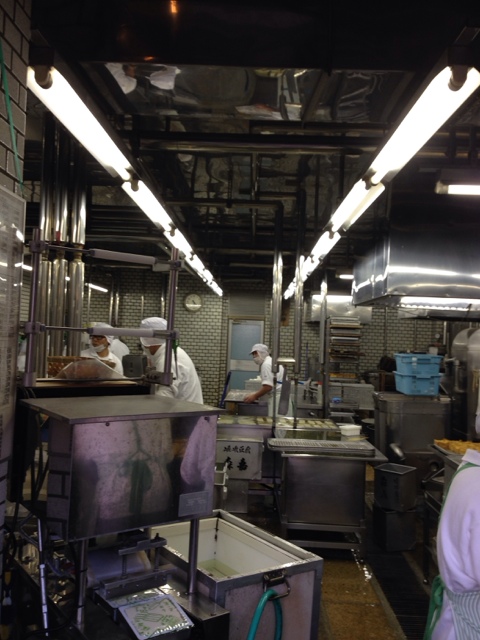









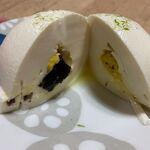



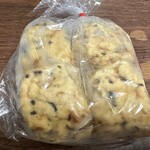


Details
Reservation Info
Reservations accepted, in-store hand delivery only
Children
child-friendly
Payment Method
No credit cards
Electronic money is not accepted
Restaurant Service Fee
nashi (Pyrus pyrifolia, esp. var. culta)
This fee is charged by the restaurant, not related to our platform
Number of Seats
8 seats
(Take-out only: 8 seats on a bench in front of the store)
Private Dining Rooms
None
Smoking and Non-Smoking
No smoking at the table
Parking
Yes
5 units
Comments
(19)
ハマチの一生
4.50
Sagano Tofu Morika-san, I think the tofu here is the most delicious in Japan (white tofu). This shop sells summer-only spicy tofu and silk tofu, with the spicy tofu costing around 280 yen each. It's cute and filled with spicy mustard that packs a punch, and the flavor with seaweed is great. When you drizzle a little soy sauce on it and eat it, you'll feel like summer has arrived. (I think this is something that someone living in Kyoto should say). The silk tofu is firmer than the usual Sagano tofu they sell, rich and delicious. If you ever go to Arashiyama, make sure to stop by Morika-san's tofu shop and get some as a souvenir. It's delicious!




SELUNO
4.00
Since I came to Kyoto, I sometimes crave it and come to buy it. It's near Kiyomizu-dera Temple. There is a parking lot for 4 cars next to the shop. They have Sagatofu, Daigensui tofu, Daioage hirousu natto. The tofu here uses gypsum and calcium sulfate as coagulants, which gives it a unique taste. The beans must also be good. This time, I tried the limited edition Daigensui tofu for the first time. Hirousu is always full of lily roots and I usually eat it in simmered dishes. As for natto, Gyuwaka natto is particular about the soybeans, fermentation method, and natto bacteria, providing a unique natto with a small batch and a wide variety that other major companies cannot produce. The beans are large, but they are delicious. It wasn't on the menu sign, so I asked, and they had it. Delicious.



いけずな京男
4.70
A rainy day. In the afternoon when the rain eased, I went to Saganomori Kawanaka-san for some shopping. A long time ago, there was a mahjong gathering at a friend's house nearby, and since they also ran a guesthouse, the lady of the house used to treat us with yudofu made with their tofu. I still remember the taste, so occasionally I feel like having it and drive there. The shop has a parking lot for four cars next to it. I was worried if it would be crowded, but when I arrived, it was a lucky day with only one elderly customer leaving, so I had the place to myself. Well, even in autumn such luck is rare, but today was fortunate. There were new product samples displayed at the entrance, so I pointed at them and requested Sagatofu, Kinugoshi, summer limited edition spicy tofu, aburaage, and hirousu. If you buy these at a supermarket, you would get a good amount of change from a thousand yen, but here it added up to around three thousand yen. The Kyoto locals' favorite omotofu shop's tofu costs 98 yen. I use it regularly. Sagatofu 480 Kinugoshi 480 Spicy tofu 440 Hirousu 270x5 1350 Aburaage 270 Total 3262 yen The tofu is about the size of two pieces from a supermarket. It was smooth and silky in texture despite being firm. Hirousu contains large pieces of yurine (lily root) and ginnan (ginkgo nuts). It has a satisfying texture. And most importantly, it's delicious. It's authentic, so it's not expensive at all. I brought them back and made yudofu, tofu, warmed hirousu with ginger, grated daikon, and kujo negi, and aburaage with kujo negi in a closing dish called Yuba-don. It's perfect with beer in this season. I also wanted to buy bou-hirousu, which is a longer shape, but it would take a bit more time. I thought the tofu shop only sold during the day because they start early in the morning, but it seems they also make them during the day. By the way, spicy tofu. Many Kyoto locals are not familiar with it, and the origin is uncertain. Around 2000, I found out there was a type of tea bowl tofu in Noto, and in Kanazawa, they casually mentioned adding spicy sauce to cold tofu, which surprised me. However, I heard that someone who trained in Kyoto passed it on to Noto. On the other hand, in Gifu, the same thing has been eaten for a long time, so there is a possibility that it was passed from Gifu to Kyoto. It's intriguing. Lastly, I read a book called "Tofu Michi," which summarizes the stories of the shop owner here. From his training days to the current tofu-making process, and also serving tofu at Tenryu-ji Temple events, I learned that tofu has such a deep foundation. Thinking about that, I will continue to enjoy it in the future. Thank you for the delicious meal.




chino600
3.50
I visited a tofu shop that supplies to many famous restaurants, even though it's close to my house, I had never been there before, so I visited while taking a walk in Arashiyama. I bought some "hiiragi" to eat on the spot! It was very hot and tasted delicious when I sprinkled salt on it. I enjoyed it so much that I also bought some "karashi tofu", which had mustard in the center. I added a little soy sauce and it was incredibly delicious! I think I'm going to become a regular customer from now on!
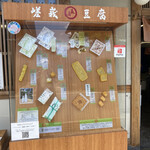



グルメポッキー
3.30
Located in the residential area behind the Togetsukyo Bridge, next to a tofu factory, this takeout-only shop has a parking lot for about 5 cars. The prices include tax: 1) Large Tofu 519 yen, Small Tofu 325 yen, Naked Tofu 292 yen 2) Thick Fried Tofu 98 yen 3) Fried Tofu 292 yen 4) Grilled Tofu 270 yen 5) Hironasu Tofu 292 yen. The menu consists of tofu and its processed products only. The tofu has a firm and silky texture, with a strong bean flavor. The yudofu (tofu hot pot) is delicious and enjoyable.



dai1223
3.40
Visited around 11:00 on a holiday. No wait. Didn't eat atsuage or aburaage on the spot, but had hirousu. It comes with salt, but it tastes bland without anything. Tastes delicious with salt added. Next time, I want to try eating tofu or something.

がりんこすいか
3.50
From Arashiyama towards Kibune, near Seiryo-ji Temple, there is a tofu shop with always about 2 groups of customers waiting. Local people even bring their own containers, showing that it is a popular spot for everyday use. Their mustard tofu is a unique variation with mustard directly mixed in. The contrast between the simple exterior of the tofu and the spiciness is interesting. The fried tofu is crispy on the outside but still fluffy and chewy inside, which is my personal favorite texture. With around 10 varieties available, it seems like a good idea to share with friends. It is also mentioned in Yasunari Kawabata's "The Old Capital".



百川 茂左衛門
3.50
Founded during the Edo Ansei period, this tofu shop has been featured in works by authors such as Kawabata Yasunari and Shiba Ryotaro. It is used in restaurants in the Sagano-Arashiyama area, including the Hoshinoya Kyoto hotel, as well as department stores and restaurants in Gion. Located in the direction of the Atago Kaido on the way to Kanno and Saga Toriimoto, it is far from the nearest station in Sagano-Arashiyama. While wholesale is the main focus, they also sell retail at the storefront. The majority of customers are locals rather than tourists, with locals mainly coming to buy tofu. You can also buy spicy tofu with mustard in it, or Hiryu head, which is wrapped in plenty of ginkgo nuts and lily roots, for takeout. However, it is not primarily for takeout, so eating on the spot may be a bit difficult. The tofu has a light and refreshing taste while still retaining the flavor of the soybeans.



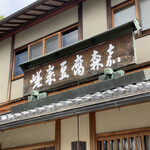
nicoworld
2.00
Taste: Not delicious
Quantity: Normal
Memorable dish: None in particular
Menu: Normal
Atmosphere: Normal
Cost performance: Normal
Customer service: Normal
Likelihood of revisiting: No
I tried something like Hiroshi's eggplant, but it was cold and not very tasty. It seems that it is delicious when eaten with salt right after it is made.



motoi321
3.50
Wife and I went on a lunch trip to Arashiyama! We got takeout for drinks at night. The "Sagatofu (Kinu)" costs 443 yen including tax. We had it at home as Yudofu. It was really delicious but expensive. It's the best I've ever had, but pricey. They don't use nigari. Recent brand tofu at supermarkets just focuses on making the soybean flavor strong, but the real taste is this one. It's almost like silk tofu even though it's called cotton tofu. The taste of soybean, water, and starch from the tofu came through. Especially the taste of the water was important. The "Atsuage (1 piece)" costs 81 yen each, and we had 3. We grilled it on a hot plate and ate it with soy sauce, bonito flakes, and grated ginger. It's also delicious. Even though it's small, it's tasty. It's a great dish to enjoy with alcohol. The tofu has a gentle firmness, coated in fried coating. The crispy exterior leads to a soft and mild interior, where you can taste the soybean and water minerals. The combination with bonito flakes, soy sauce, and ginger adds a sharp umami flavor. Overall, this place only offers takeout, but customers keep coming in cars one after another. With a dedicated parking lot next to it, it's understandable why it's a popular local spot. If you love tofu, you should try it. This is real delicious tofu. Next time, I'll introduce their summer limited edition item.




ゆう1582
3.40
I visited a restaurant that I heard was known for its delicious tofu. It was during Golden Week and with the impact of the coronavirus, there were no customers when I visited around noon. I bought two blocks of tofu and they were quite large, more than the usual size of two blocks. I enjoyed some cold tofu as soon as I got home, and it was creamy and very delicious. I also bought something called "ganmo" and it had a lot of filling and was tasty. I made it into a simmered dish, but next time I want to try it in oden.



エクエク
3.90
Exquisite. It may be the finest street food menu in Japan. Hot and freshly fried, you can taste the high-quality oil in just one bite, with a slightly fragrant and fluffy texture. A small soy sauce dispenser is provided. The soy sauce is rich and dark, similar to sashimi soy sauce, with a rich flavor. This alone is delicious. The morning in Saga Arashiyama is filled with happiness. Kyoto is really nice in the morning. Spring mornings are especially nice. In the softly gentle beginning of Kyoto's spring season, I enjoyed delicious fried tofu. I ended up having two pieces because it was so good...




フル・フロンタル
3.60
About a 14-minute walk from Arashiyama Station on the Randen line, away from the crowds of tourists, you'll find "Saga Tofu Morika." I had decided to visit this place for sure when I went to Arashiyama (^O^). It feels more like a factory-direct sales shop rather than a regular store, where locals can buy for their dinner table. So, I bought some to have for dinner at home ♪
☆Thick fried tofu 1 piece for 81 yen
I grilled it a bit on the gas stove after bringing it home. The outside was crispy while the inside tofu was smooth and delicious (*´꒳`*)
☆Hirousu (tofu skin) for 249 yen
I simmered this with dashi, and the oil or flavor that came out of the hirousu made the dashi taste so good! Inside, there were lily bulbs and ginkgo nuts, and I thought they would be amazing in oden (*^ω^*)
This tofu is featured in novels by authors like Kawabata Yasunari and Shiba Ryotaro, and is used in Zen Buddhist temples like Tenryu-ji and traditional Japanese restaurants. I didn't buy tofu this time, but I'm sure it must be delicious! If I have the chance, I will definitely use it again (≧∇≦)




*アルテミス*
3.40
Located in Sagano Shakadō Fujinokimachi, Ukyo-ku, Kyoto, right in front of the entrance to Seiryo-ji Temple (related articles 1 and 2), is Sagatofu Morika. After enjoying Yuba cheese from Kyoto Arashiyama Yuba Cheese Honpo and Tanaka Special Chicken Croquette from Arashiyama Tanaka (Tanaka Shoten), we were disappointed to find that the lunch restaurant was closed. So, we decided to visit Sagatofu Morika after seeing the steam locomotive at the Torokko Saga Station.
Sagatofu Morika is a famous tofu shop that has been featured in works by authors such as Kawabata Yasunari and Shiba Ryotaro. It is known for providing tofu to hotels, inns, ryokans, and famous restaurants in Kyoto. There is always a line of more than 30 people in front of the store.
I have purchased tofu and freshly fried aburaage from Sagatofu Morika a few years ago, although I have not yet written a blog post about it. Last spring, when the infectious disease began to spread, there were only a few customers, and there was no long line. My favorite is the freshly fried aburaage, which is also available in Hiryu Head. Of course, you can also buy tofu. However, it can be inconvenient to carry around while sightseeing, so it's not easy to buy on the go.
General customers can only take out food. If you make a reservation, you can have your order reserved and handed to you at the store. At the entrance of the store, a staff member takes your order, you make the payment, and then you wait for a while. While you cannot enter the store, you can take photos inside.
The large aburaage is fried efficiently, and it is handed to you in a paper bag along with a bottle of soy sauce dressing. Although there was no line and almost no waiting time, it was not freshly fried. I was a bit disappointed because I wanted to let my companion try the freshly fried aburaage. Freshly fried aburaage is so hot that you have to hold the edge of the paper bag. The outside is crispy, and when you bite into it, the oil oozes out, giving it a fluffy, soft texture with a delicious aroma.
If you ever come to this area, be sure to try this delicious treat.




emu2
3.90
Near Seiryo-ji Temple in Saga, there is a tofu shop that has a long history and was even mentioned in Kawabata Yasunari's novel "Koto." In addition to delicious tofu, they also offer tasty fried tofu and "hirosu" for takeout. The freshly fried crispy and crunchy fried tofu is a must-try, and it disappears in no time despite its size. The hirosu, with luxurious chunks of lily bulb and ginkgo nuts, is fluffy and delicious. I always make sure to stop by tofu shops in tourist spots with clean water like Yoshinoyama, but the fried tofu and hirosu here are exceptional. I believe it's a result of the quality ingredients and traditional techniques. If you're visiting Seiryo-ji Temple or Daikaku-ji Temple, be sure to check out this shop.




くつろぐ
4.00
I stayed at a ryokan in Arashiyama and decided to visit this restaurant after morning sightseeing. The tofu here is made using gypsum powder instead of the usual nigari, resulting in a firmer texture. I tried the freshly made tofu and was surprised by the generous portion. The hot tofu was delicious on its own.

Mりん1964
3.50
Next to Sagano Seiryo-ji Temple, I had heard rumors about this place so I decided to buy some tofu on my way back. You have to call out to someone inside the factory to make a purchase. I bought "kinugoshi" and "karashi tofu". The tofu is much larger than what you find in supermarkets and has a smooth texture. Unfortunately, I am not very good at distinguishing tofu flavors, but the satisfaction of buying it here was enough for me.


デラホーヤ
3.70
I took the Nozomi No. 1 train departing from Tokyo Station at 6:00 AM and arrived at Kyoto Station. I then transferred to the Sagano Line (Sanin Main Line) and got off at Saga-Arashiyama Station. From there, I strolled through the beautiful autumn leaves seeking paths in Saga Arashiyama, starting from Okochi Sanso Garden to Daikakuji Temple. After visiting Daikakuji Temple, I visited "Saga Tofu Morika" and purchased Saga Tofu for 410 yen (excluding tax). Unlike Kanto tofu, Saga Tofu uses "sumashi-ko" (calcium sulfate) instead of "nigari" as a coagulant. This results in a smooth and soft tofu with a refined texture. Saga Tofu from "Morika" has made significant contributions to the culture of Kyoto tofu and is used in top-notch establishments like Arashiyama Yoshikawa and Hoshinoya Kyoto. The ladies borrowed soy sauce from Morika and sat on a bench outside the store to enjoy the tofu (chopsticks were brought). I had only a bite as I had already eaten a bento on the Shinkansen. The exquisite Saga Tofu from Morika is soft yet firm, smooth, and has a texture between silk and cotton. It is a delightful experience to enjoy such high-quality tofu for only 443 yen. Many places serving the famous Yudofu in Saga Arashiyama also use Morika's Saga Tofu. I enjoyed the body-friendly Saga Tofu from Morika in the morning. "Thank you for the meal."




なか卯31
3.50
I went to a famous tofu shop in Arashiyama, Kyoto by car. It seems far from the station if you go by train. The scent of soybeans outside was delightful. I bought thick fried tofu and hirousu to take home. Hirousu was light and full of ingredients. It tastes delicious even when added to simmered dishes with lily bulbs and ginkgo nuts. They are also sold at Takashimaya on certain days. Thank you for the meal.

Email Login